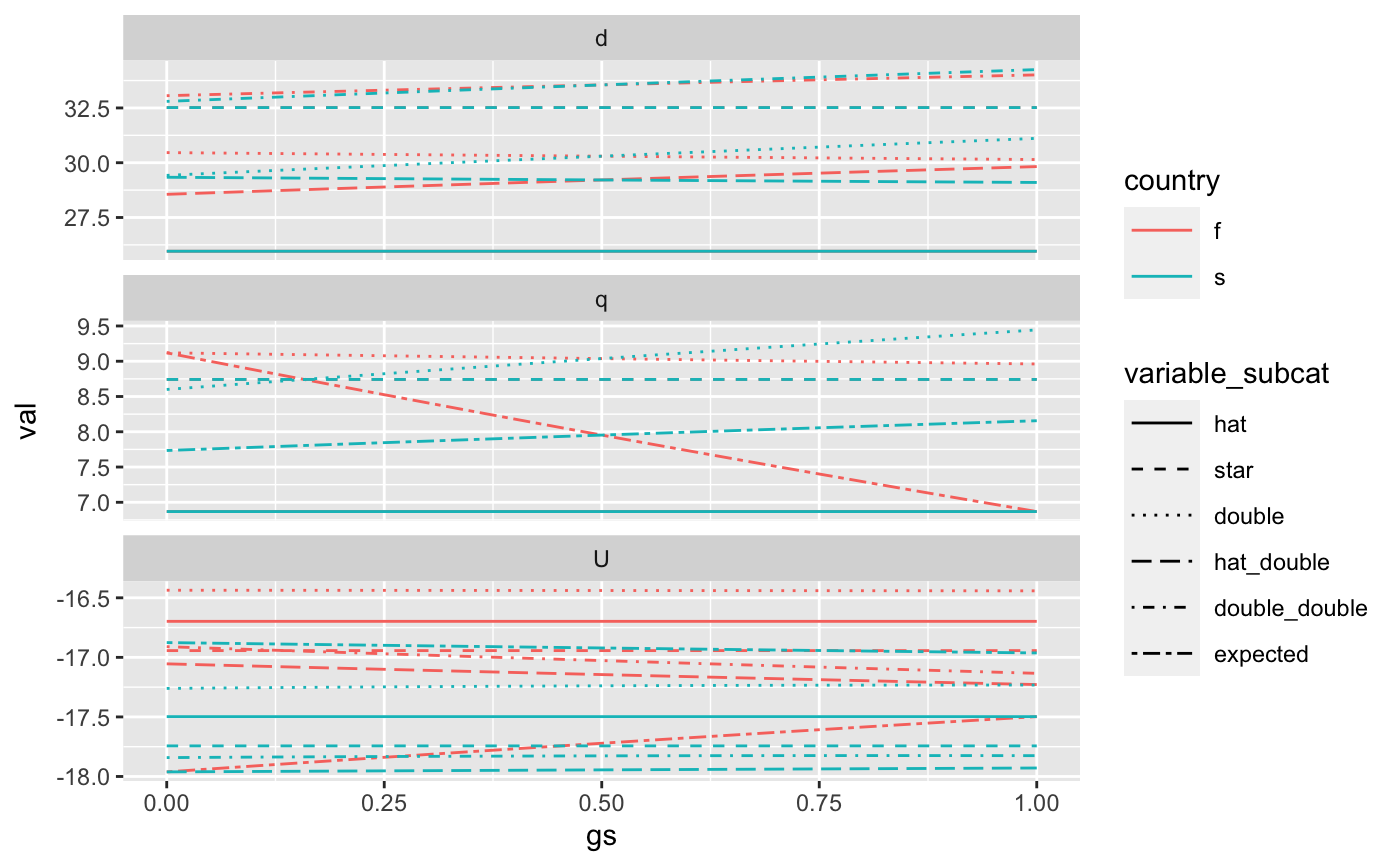Gather outcomes
gather_outcomes.RdThis function gathers the outcome variables (utility, depth, pumping) from evaluate_treaty_cases
in a format that makes it easier to plot and visualize with ggplot2.
gather_outcomes(treaty_df, expectation = FALSE)
Arguments
| treaty_df | Outcomes from |
|---|---|
| expectation | Logical where, if TRUE, expected pumping of the other player is calculated. See details. |
Details
This function is used to assist with plotting and analysis of results from the game. Note that all variables whose column names begin with "q[sf]", "U[sf]", or "d[sf]" are gathered.
If expectation is TRUE, the expected value of U (U_expected) and q (q_expected) for each player
are calculated under the assumption that a treaty is signed. Utility for player i, Ui,
is calculated under the assumption that player i is Honest.
If trust is 0, then the expected value of U is the victim utility, and for q it is the cheat pumping. If
trust is 1, then the expected value is the First Best for both U and q. Intermediate values of trust produce intermediate
values of expectation. The belief of player \(i\) that player \(j\) is trustworthy is \(g_i\).
Therefore the expected values are calculated as
$$E[U_i] = \gamma_i \hat U_i + (1-\gamma_i) \hat U_i^{**} \, .$$
$$E[q_j] = \gamma_i \hat q_j + (1-\gamma_i) q_j \, .$$
The resulting values are returned as "qj_expected". In other words for country==i, this pumping rate
is expected value of qi from the perspective of j. Note that both gs and gf must
be included as columns in treaty_df for q_expected to be calculated.
Examples
#> Warning: package ‘tidyr’ was built under R version 3.6.2params <- example_params_confined params$gs <- NULL params <- crossing(params,gs=seq(0,1,by=0.05)) treaty_df <- evaluate_treaty_cases(params,'quda') treaty_long <- gather_outcomes(treaty_df, TRUE) ggplot(treaty_long) + geom_line(aes(x=gs,y=val,color=country,linetype=variable_subcat)) + facet_wrap(~variable_cat,scales="free_y",ncol=1) + scale_linetype_manual(values=c("solid","dashed","dotted","longdash","dotdash","twodash")) + theme(legend.key.width = unit(1,"cm"))
